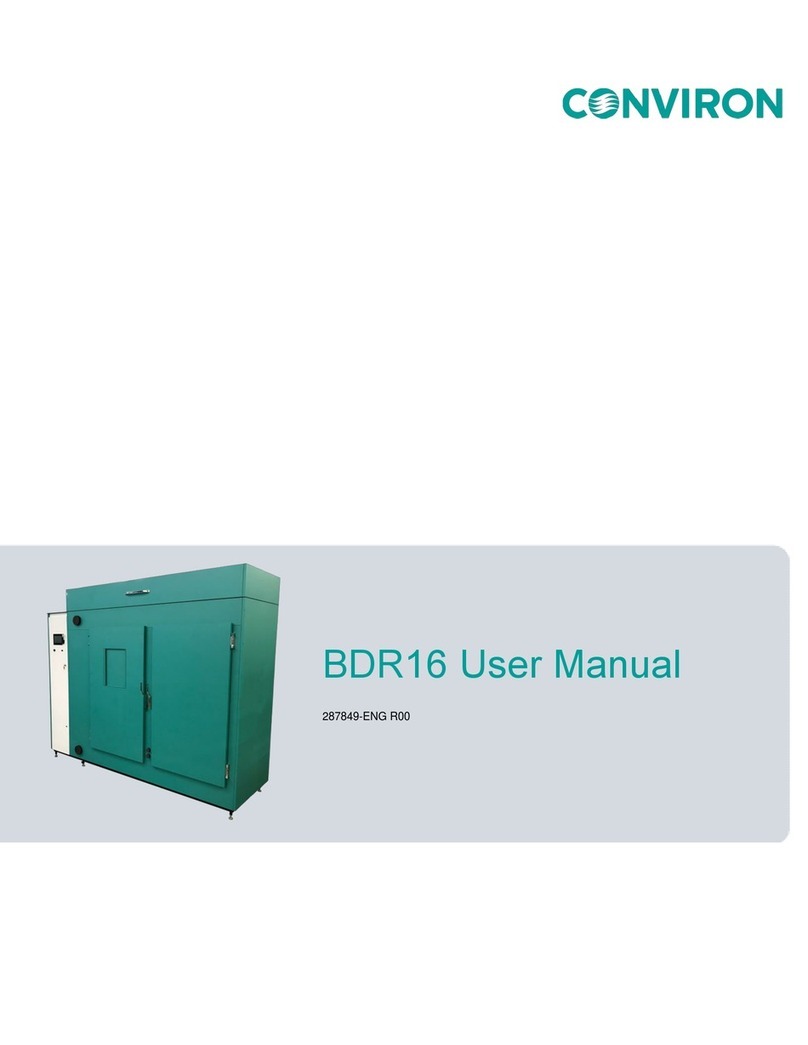vi November 8 2019 | 291180-ENG R00
LIST OF FIGURES
Figure 3-1 Remove the L-Brackets ....................................................................................................10
Figure 3-2 Position the Forks .............................................................................................................10
Figure 3-3 Remove the Chamber from the Pallet Using the Optional Ramp.....................................11
Figure 3-4 Chamber Levelers.............................................................................................................12
Figure 3-5 Wire Shelves, Support Brackets, and Seedling Tray........................................................13
Figure 3-6 Install the Shelf Support Brackets.....................................................................................14
Figure 3-7 Shelf Installed onto Support Bracket.................................................................................15
Figure 3-8 Seedling Tray....................................................................................................................15
Figure 3-9 Back Panel Connections...................................................................................................16
Figure 5-1 Aspirator............................................................................................................................23
Figure 5-2 Instrumentation Port Location...........................................................................................23
Figure 5-3 Fresh Air Inlet and Exhaust Port Location ........................................................................24
Figure 6-1 Power Cable......................................................................................................................29
Figure 6-2 Loosen the Screws............................................................................................................29
Figure 6-3 Remove the Brackets........................................................................................................30
Figure 6-4 Remove the Hex-Head Screws.........................................................................................30
Figure 6-5 Remove the Lamp Fixture Contents.................................................................................30
Figure 6-6 Slide the Lamp Fixture Into the Tube................................................................................31
Figure 6-7 Align the Slots...................................................................................................................31
Figure 6-8 Press On the Caps............................................................................................................31
Figure 6-9 Tighten the Screws ...........................................................................................................31
Figure 6-10 Align the End Cap with the Fixture....................................................................................32
Figure 6-11 Tighten the End Cap Screws ............................................................................................32
Figure 6-12 Install the Fixture...............................................................................................................32
Figure 6-13 Install the Brackets............................................................................................................32
Figure 6-14 Connect the Power............................................................................................................32
Figure 6-15 Remove the USH Box from the Chamber.........................................................................34
Figure 6-16 Remove the USH Box Lid.................................................................................................35
Figure 6-17 Ceramic Disc Replacement ..............................................................................................35
Figure 8-1 Sample GEN1000-GE Rating Plate..................................................................................42
LIST OF TABLES
Table 1-1 Hazard Identification Symbols ............................................................................................1
Table 3-1 Water Supply Parameters.................................................................................................10
Table 3-2 Back Panel Connection Descriptions................................................................................16
Table 9-1 Terms and Definitions.......................................................................................................43




























